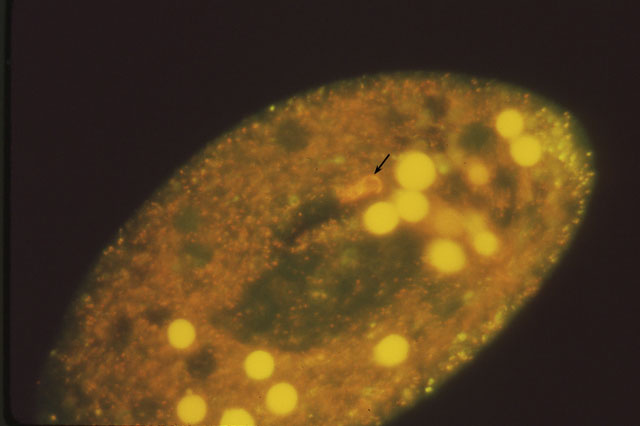|
In another experiment we incubated living P.
multimicronucleatum in the fluorescent vital dye, acridine orange,
that can pass through cellular membranes and found that acidosomes
have an acid content. Acridine orange is a weak base and becomes
protonated in acidic compartments in the cell. Once protonated this
dye cannot diffuse out of the vesicle. As more protonated acridine
orange accumulates in a compartment the color of the compartment will
change from green to yellow to orange and finally to red orange at the
highest concentrations of acridine orange. We observed a “necklace” of
orange vesicles surrounding the cytopharynx (arrow) of living
paramecia showing that acidosomes have an acid content. This led to
our naming these vesicles acidosomes (Allen and Fok, J. Cell Biol.
97:566-570, 1983) and proposing their function to be the acidification
of the DV-II (phagoacidosome). Acidification is needed to kill the
food organisms and to denature their proteins in preparation for
digestion. A 35mm colored slide was taken by R. Allen with Zeiss
Universal light microscope on Ektachrome 400 colored film, 4 sec.
exposure. Black and white picture published in J. Cell Biol.
97:566-570, 1983.
|
